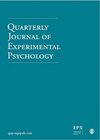预测未达标是否需要付出代价?一项调查 L1 和 L2 说话者的 VWP 研究
IF 1.5
3区 心理学
Q4 PHYSIOLOGY
引用次数: 0
摘要
研究发现,第一语言(L1)和第二语言(L2)使用者都会对即将到来的语言信息进行预测,预测行为受个体差异和方法因素的影响。然而,目前尚不清楚的是,当预测作出但未实现时,是否会产生代价。L2 说话者的 L2 经验较少,而且解析对认知能力要求较高,这些因素加在一起可能会导致 L2 说话者产生与 L1 说话者不同的预测成本。在本研究中,我们使用视觉世界范式,测试了 L1 和 L2 说话者是否以同样的方式、在同样的时间范围内进行预测,以及在预测失败时是否产生同样的代价。我们还探讨了熟练程度和语速的作用。我们发现,两组人的预测方式和预测时间相似。此外,当目标对象是最有可能的备选对象时,两组人都不会产生预测成本,但当预测不符合要求时,L2 说话者需要花更长的时间将注意力转移到目标对象上。我们认为,这反映的是词汇访问速度的减慢,而不是特定的预测成本。只有将语速纳入分析时,我们才会发现预测差异,这突出了在使用视觉世界范式的研究中关注语速的重要性。总之,本研究支持了一些研究,这些研究表明 L1 和 L2 说话者可能会对即将到来的信息进行多个部分预测,而不是预测一个特定的候选词汇,同时抑制不太可能出现的候选词汇。本文章由计算机程序翻译,如有差异,请以英文原文为准。
Is there a cost when predictions are not met? A VWP study investigating L1 and L2 speakers
Research has found that both first language (L1) and second language (L2) speakers make predictions about upcoming linguistic information, with predictive behaviour being impacted by individual differences and methodological factors. However, it is not clear whether a cost is incurred when a prediction is made, but not met. L2 speakers have less experience with their L2 and parsing can be cognitively demanding, which together may lead L2 speakers to incur prediction costs differently relative to L1 speakers. In this study using the visual world paradigm, we test whether L1 and L2 speakers predict in the same way, within the same time frame, and incur the same costs if predictions are not met. We also explore the role of proficiency and speech rate. We found that both groups predict in a similar way and within a similar time frame. In addition, neither group incurred a prediction cost when the target was the most likely alternative, though L2 speakers take longer to shift their attention to the target object when predictions are not met. We argue that this reflects a slowing of lexical access rather than a specific cost of prediction. We only found prediction differences when speech rate was included in the analysis, highlighting the importance of attending to speech rate in studies using the visual world paradigm. Overall, this study supports research showing that both L1 and L2 speakers may make multiple partial predictions about upcoming information rather than predicting one specific lexical candidate while inhibiting less likely lexical candidates.
求助全文
通过发布文献求助,成功后即可免费获取论文全文。
去求助
来源期刊
CiteScore
3.50
自引率
5.90%
发文量
178
审稿时长
3-8 weeks
期刊介绍:
Promoting the interests of scientific psychology and its researchers, QJEP, the journal of the Experimental Psychology Society, is a leading journal with a long-standing tradition of publishing cutting-edge research. Several articles have become classic papers in the fields of attention, perception, learning, memory, language, and reasoning. The journal publishes original articles on any topic within the field of experimental psychology (including comparative research). These include substantial experimental reports, review papers, rapid communications (reporting novel techniques or ground breaking results), comments (on articles previously published in QJEP or on issues of general interest to experimental psychologists), and book reviews. Experimental results are welcomed from all relevant techniques, including behavioural testing, brain imaging and computational modelling.
QJEP offers a competitive publication time-scale. Accepted Rapid Communications have priority in the publication cycle and usually appear in print within three months. We aim to publish all accepted (but uncorrected) articles online within seven days. Our Latest Articles page offers immediate publication of articles upon reaching their final form.
The journal offers an open access option called Open Select, enabling authors to meet funder requirements to make their article free to read online for all in perpetuity. Authors also benefit from a broad and diverse subscription base that delivers the journal contents to a world-wide readership. Together these features ensure that the journal offers authors the opportunity to raise the visibility of their work to a global audience.

 求助内容:
求助内容: 应助结果提醒方式:
应助结果提醒方式:


